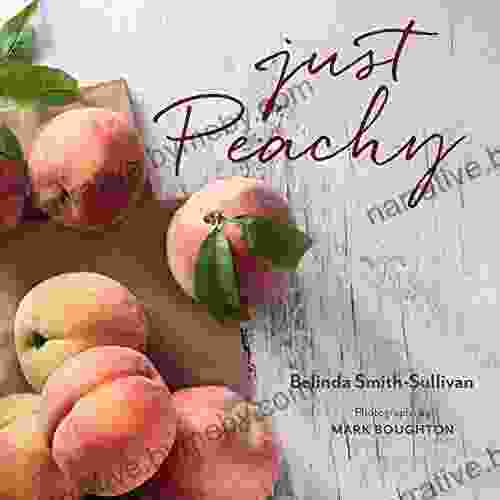Unveiling the Secrets of Innovation: A Comprehensive Guide to The Gang of Four

In the ever-evolving world of technology, innovation is the lifeblood of progress. From groundbreaking inventions to revolutionary software, the ability to create and implement new ideas is essential for any organization that seeks to stay ahead of the curve. The Gang of Four, a legendary group of software engineering experts, has left an indelible mark on the industry with their seminal book, "Design Patterns: Elements of Reusable Object-Oriented Software." This article takes a comprehensive look at The Gang of Four and their influential work, providing a detailed guide to the essential concepts and principles that have shaped the way we design and develop software.
The Gang of Four comprises four renowned computer scientists: Erich Gamma, Richard Helm, Ralph Johnson, and John Vlissides. Their collaboration in the early 1990s resulted in the creation of "Design Patterns: Elements of Reusable Object-Oriented Software," a book that has become the bible for software engineers worldwide. Each member of the group brought unique expertise and perspectives to the table.
- Erich Gamma: A Swiss computer scientist known for his work on object-oriented design and the Smalltalk programming language.
- Richard Helm: An American software engineer and professor who has made significant contributions to object-oriented programming and design.
- Ralph Johnson: An American computer scientist and professor who is noted for his pioneering work in software reuse and object-oriented analysis and design.
- John Vlissides: A Greek-American computer scientist and software engineer who specializes in object-oriented design and programming.
"Design Patterns: Elements of Reusable Object-Oriented Software" is a comprehensive catalog of proven software design solutions. The book provides a detailed analysis of 23 recurring design problems and offers practical, reusable solutions in the form of design patterns. These patterns are classified into three main categories: creational, structural, and behavioral.
4.9 out of 5
| Language | : | English |
| File size | : | 30677 KB |
| Print length | : | 240 pages |
| Screen Reader | : | Supported |
- Creational patterns: Used to create objects and control the instantiation process.
- Structural patterns: Used to compose objects and classes into larger structures.
- Behavioral patterns: Used to define communication mechanisms between objects and classes.
By utilizing design patterns, software engineers can leverage proven solutions to common programming problems, resulting in code that is more flexible, reusable, and maintainable. The book's emphasis on code reuse and object-oriented principles has made it an indispensable resource for software developers of all levels.
The 23 design patterns presented in The Gang of Four's book cover a wide range of software design scenarios. Some of the most commonly used and influential patterns include:
- Factory Method: Defines an interface for creating an object, but allows subclasses to alter the type of object that will be created.
- Singleton: Ensures that a class has only one instance and provides a global point of access to that instance.
- Observer: Defines a one-to-many dependency between objects so that when one object changes state, all its dependents are notified and updated automatically.
- Decorator: Attaches additional responsibilities to an object dynamically.
- Composite: Composes objects into tree structures to represent part-whole hierarchies.
- Strategy: Defines a family of algorithms, encapsulates each one, and makes them interchangeable. Strategy lets the algorithm vary independently from the clients that use it.
These patterns provide a systematic approach to solving common software design challenges, enabling developers to create more robust, scalable, and maintainable software solutions.
The Gang of Four and their seminal work have had a profound impact on the software engineering industry. The concepts and principles outlined in "Design Patterns: Elements of Reusable Object-Oriented Software" have become essential elements of software design and development.
- Enhanced Code Quality: Design patterns promote code reuse, which reduces duplication and improves overall software quality.
- Increased Flexibility and Extensibility: By abstracting design decisions into patterns, software becomes more flexible and easier to extend and modify.
- Improved Communication: The use of a common design pattern language facilitates communication and collaboration among software engineers.
- Faster Development: By leveraging proven solutions, developers can accelerate the software development process.
- Education and Training: The Gang of Four's book has become a standard textbook for software engineering education, shaping generations of software developers.
The Gang of Four and their groundbreaking work on design patterns have transformed the software engineering landscape. Their book, "Design Patterns: Elements of Reusable Object-Oriented Software," continues to inspire and guide developers worldwide. By embracing the principles of design patterns, software engineers can create software that is more flexible, reusable, maintainable, and scalable. As technology continues to evolve, The Gang of Four's legacy will undoubtedly endure, serving as a testament to the power of innovation and collaboration in the field of software engineering.
4.9 out of 5
| Language | : | English |
| File size | : | 30677 KB |
| Print length | : | 240 pages |
| Screen Reader | : | Supported |
Do you want to contribute by writing guest posts on this blog?
Please contact us and send us a resume of previous articles that you have written.
 Book
Book Novel
Novel Page
Page Chapter
Chapter Text
Text Story
Story Genre
Genre Reader
Reader Library
Library Paperback
Paperback E-book
E-book Magazine
Magazine Newspaper
Newspaper Paragraph
Paragraph Sentence
Sentence Bookmark
Bookmark Shelf
Shelf Glossary
Glossary Bibliography
Bibliography Foreword
Foreword Preface
Preface Synopsis
Synopsis Annotation
Annotation Footnote
Footnote Manuscript
Manuscript Scroll
Scroll Codex
Codex Tome
Tome Bestseller
Bestseller Classics
Classics Library card
Library card Narrative
Narrative Biography
Biography Autobiography
Autobiography Memoir
Memoir Reference
Reference Encyclopedia
Encyclopedia Robert Egan
Robert Egan Aubrey Clayton
Aubrey Clayton Lisa Cron
Lisa Cron Barbara O Connor
Barbara O Connor David Seidman
David Seidman Cate Stillman
Cate Stillman Barb Musick
Barb Musick Ashley Bugge
Ashley Bugge Babu The Panda
Babu The Panda Mother Hood
Mother Hood Barbara Hulse
Barbara Hulse Azra Raza
Azra Raza B T Polcari
B T Polcari Les Stroud
Les Stroud Hal R Varian
Hal R Varian Capers Jones
Capers Jones Audrey Sutherland
Audrey Sutherland Axel Hacke
Axel Hacke Richard Paul Evans
Richard Paul Evans Beatrix Potter
Beatrix Potter
Light bulbAdvertise smarter! Our strategic ad space ensures maximum exposure. Reserve your spot today!

 Gabriel MistralDelve into the Past: "Getting to Know the Native American Indian Tribes – US...
Gabriel MistralDelve into the Past: "Getting to Know the Native American Indian Tribes – US...
 Cameron ReedWhen You're Expecting Twins, Triplets, or Quads: The Ultimate Pregnancy Guide...
Cameron ReedWhen You're Expecting Twins, Triplets, or Quads: The Ultimate Pregnancy Guide... Denzel HayesFollow ·7k
Denzel HayesFollow ·7k VoltaireFollow ·17.7k
VoltaireFollow ·17.7k W. Somerset MaughamFollow ·4.3k
W. Somerset MaughamFollow ·4.3k Tony CarterFollow ·6k
Tony CarterFollow ·6k Jeremy CookFollow ·15k
Jeremy CookFollow ·15k Chase MorrisFollow ·11.7k
Chase MorrisFollow ·11.7k Carlos DrummondFollow ·2.6k
Carlos DrummondFollow ·2.6k Samuel Taylor ColeridgeFollow ·7k
Samuel Taylor ColeridgeFollow ·7k

 Ian McEwan
Ian McEwanWhy Didn't Anyone Say Anything? Uncovering the Hidden...
By [Author's...

 William Wordsworth
William WordsworthArthurian Legendarians: Faithless One - Part One – A...
In the realm of legendary tales, the...

 Corey Hayes
Corey HayesSSAT ISEE Prep Test: Arithmetic Review Flash Cards Cram...
Are you preparing for the SSAT or ISEE exam?...

 Robert Louis Stevenson
Robert Louis StevensonUnveiling the Essential Guide to Compliance: BCBS 239...
In the ever-evolving...

 Javier Bell
Javier BellJust Peachy: A Tale of Sweetness and Sassiness
Immerse yourself in a...

 Brent Foster
Brent FosterStep-by-Step Instruction Manual to Building a Real Estate...
Are you eager to embark on the...
4.9 out of 5
| Language | : | English |
| File size | : | 30677 KB |
| Print length | : | 240 pages |
| Screen Reader | : | Supported |








